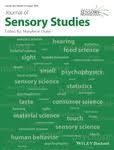How do consumers use emoji in a food-related context? Insights for the design and interpretation of emoji questionnaires
Dublin Core
Título
Tema
Abstract
The present research contributed to the growing body of research regarding the use of emoji in sensory and consumer research by filling an acknowledged knowledge gap. Its specific aim was to explore the meaning of emoji in a food-related context. The empirical approach involved 357 consumers who were tasked with writing a social media post or text message relating to a situation involving eating/drinking which was to be centered around a specific emoji. A total of 21 facial emoji were
included in the research. As expected, emoji were used to convey different meanings, including degree of liking/disliking, emotional associations, gestures and expressions.
The emoji were also used as part of messages describing negative and positive disconfirmation of expectations, which points to the importance of measuring expectations in a food-related context. Two emoji were identified as unsuitable for future research due to their nonconsensual meaning ( and ).
Fuente
Editor
Fecha
Derechos
Información sobre Derechos de Autor
(Por favor lea este aviso antes de abrir los documentos u objetos)
La legislación uruguaya protege el derecho de autor sobre toda creación literaria, científica o artística, tanto en lo que tiene que ver con sus derechos morales, como en lo referente a los derechos patrimoniales con sujeción a lo establecido por el derecho común y las siguientes leyes (LEY 9.739 DE 17 DE DICIEMBRE DE 1937 SOBRE PROPIEDAD LITERARIA Y ARTISTICA CON LAS MODIFICACIONES INTRODUCIDAS POR LA LEY DE DERECHO DE AUTOR Y DERECHOS CONEXOS No. 17.616 DE 10 DE ENERO DE 2003, LEY 17.805 DE 26 DE AGOSTO DE 2004, LEY 18.046 DE 24 DE OCTUBRE DE 2006 LEY 18.046 DE 24 DE OCTUBRE DE 2006)
ADVERTENCIA: La consulta de este documento queda condicionada a la aceptación de las siguientes condiciones de uso: Este documento es únicamente para usos privados enmarcados en actividades de investigación y docencia. No se autoriza su reproducción con fines de lucro. Esta reserva de derechos afecta tanto los datos del documento como a sus contenidos. En la utilización o cita de partes debe indicarse el nombre de la persona autora.Formato
Idioma
Tipo
Identificador
Document Item Type Metadata
Original Format
- Fecha de agregación
- August 6, 2021
- Colección
- Bibliografía Nacional Química
- Tipo de Elemento
- Document
- Etiquetas
- Comunicación no verbal, Consumidores, Cuestionarios, Medición de la emoción
- Citación
- Ares, Gastón, “How do consumers use emoji in a food-related context?Insights for the design and interpretation of emoji questionnaires,” RIQUIM - Repositorio Institucional de la Facultad de Química - UdelaR, accessed August 25, 2024, https://riquim.fq.edu.uy/items/show/6310.
- Archivos

